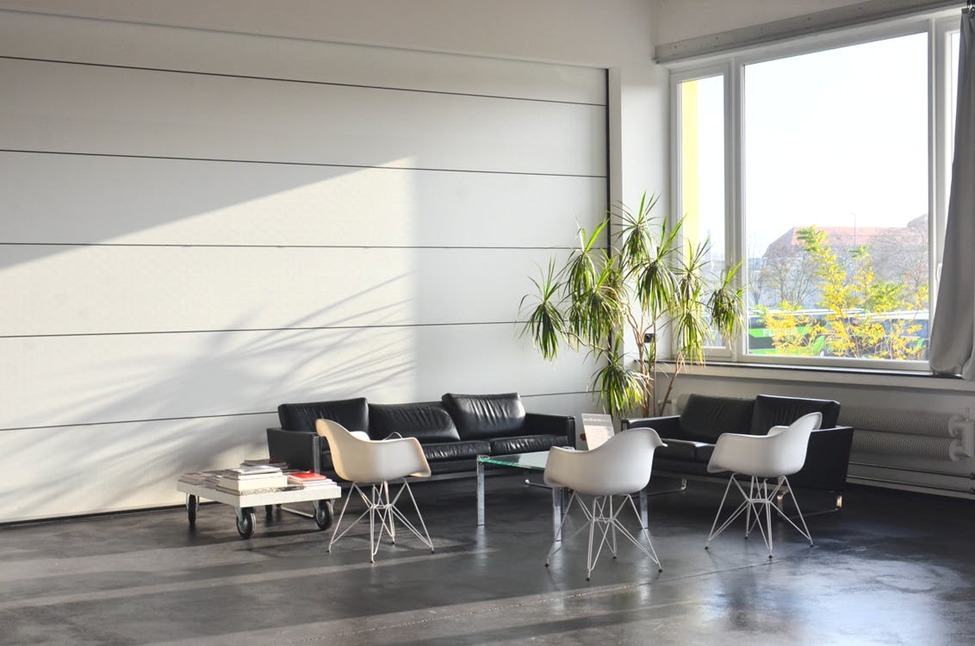Small spaces though cozy and efficient can sometimes make one feel claustrophobic. As interior designers, one of the most frequently asked queries from our clients is, ‘how can they make their rooms look bigger?’
Thankfully, there are many ways to tackle this problem. Here we share a few design-inspired tips and tricks to make your rooms ‘look’ bigger and more spacious.
- Cut the Clutter
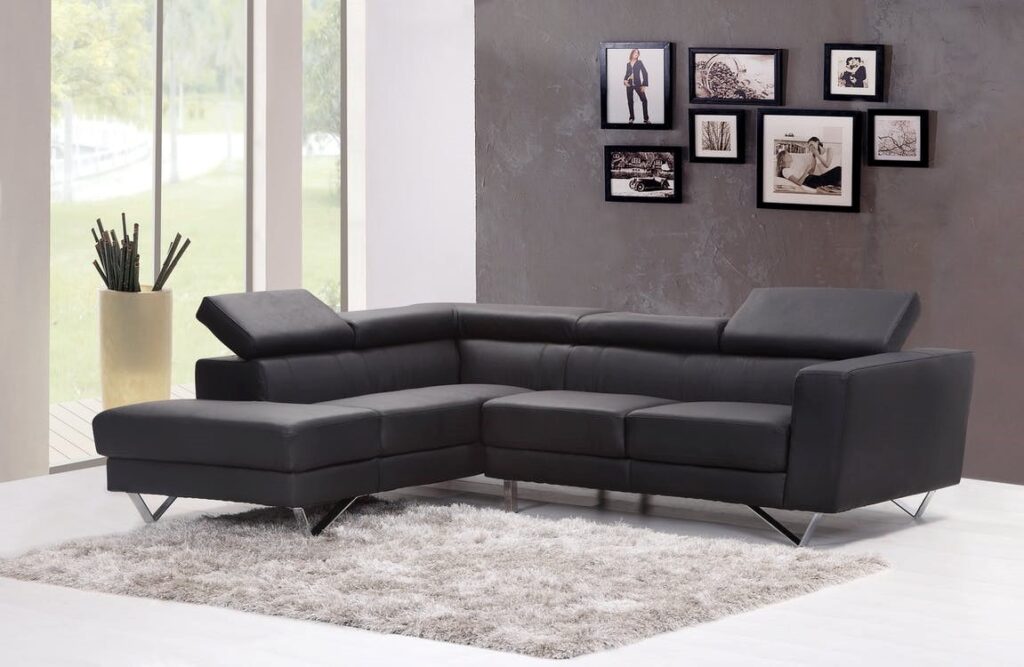
Image – Pixabay
Clutter is the greatest enemy of small spaces. Decluttering is the very first step toward making the rooms look bigger. Start getting rid of excess furniture, bulky artificial plants, knick-knacks, and décor pieces that serve no purpose to create a feeling of spaciousness.
Decluttering doesn’t only mean getting rid of items. It also means adopting creative methods to keep them out of sight. Baskets, storage shelves, furniture with storage options, and open shelving units are a few of the ways of ‘hiding’ clutter from view.
Reducing clutter has a tremendous effect on the visual appeal and size of the room.
- Colour Wise
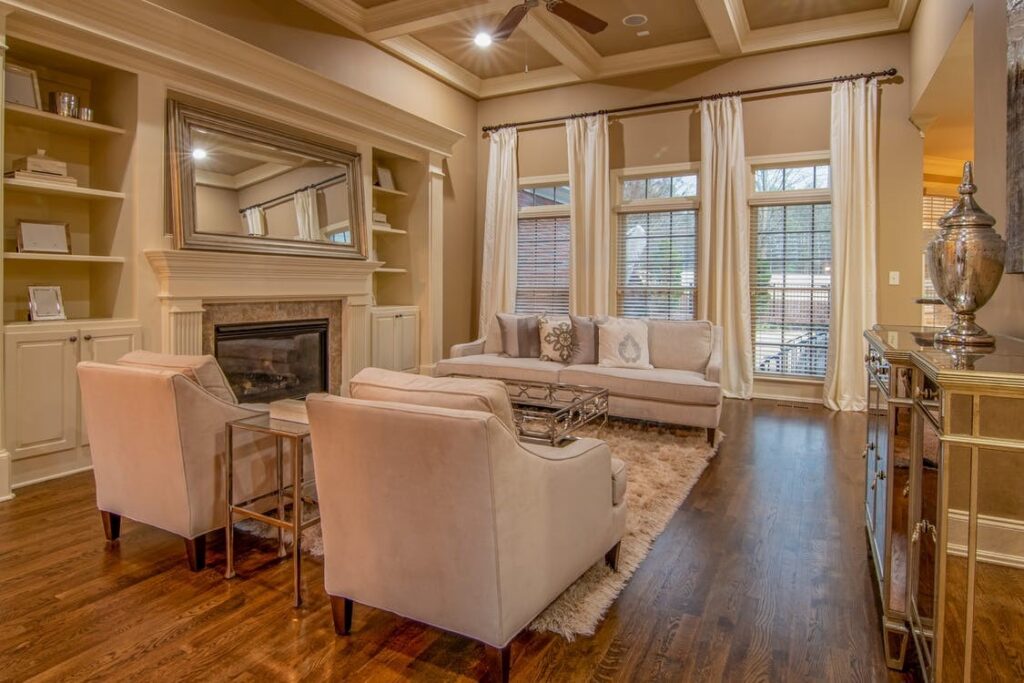
Image – Curtis Adams/ Pexels
Lighter colours such as ivory, cream, white, pale blue, or yellow and light grey are an optimum choice as they make the room appear airy and open due to their reflective qualities.
Soft tones add brightness to a room, while medium tones make the rooms appear smaller. Instead of using various colours to divide the room, one should choose a monochromatic hue that would add to the cohesiveness of the room. A single colour adds continuity to the space, whereas, using many colours creates boundaries. Light and dark colours create contrasts and help create an illusion that adds to the depth and opens up the room.
Stripes – both horizontal and vertical help highlight spaciousness. Using them vertically makes a low-ceilinged room look taller while horizontal stripes on the narrowest wall make a narrow space feel wider.
- Play with Light

Image – Pixabay
Well-lit rooms appear larger than they are. Letting in natural light is one of the best ways to open up the interior and make a room appear bigger. Sheer window coverings, skylights, removing blinds, or opening the windows are a few ways of allowing natural light to filter in.
If access to natural lighting is limited, then one can enhance the space with artificial lighting. Instead of a single light source, multiple lights spread across the room are a better choice. Recessed lights, lights layered at various heights, wall lights, floor lights, etc create ambient lighting and improve the overall look and feel of the room.
- The Magic of Mirrors
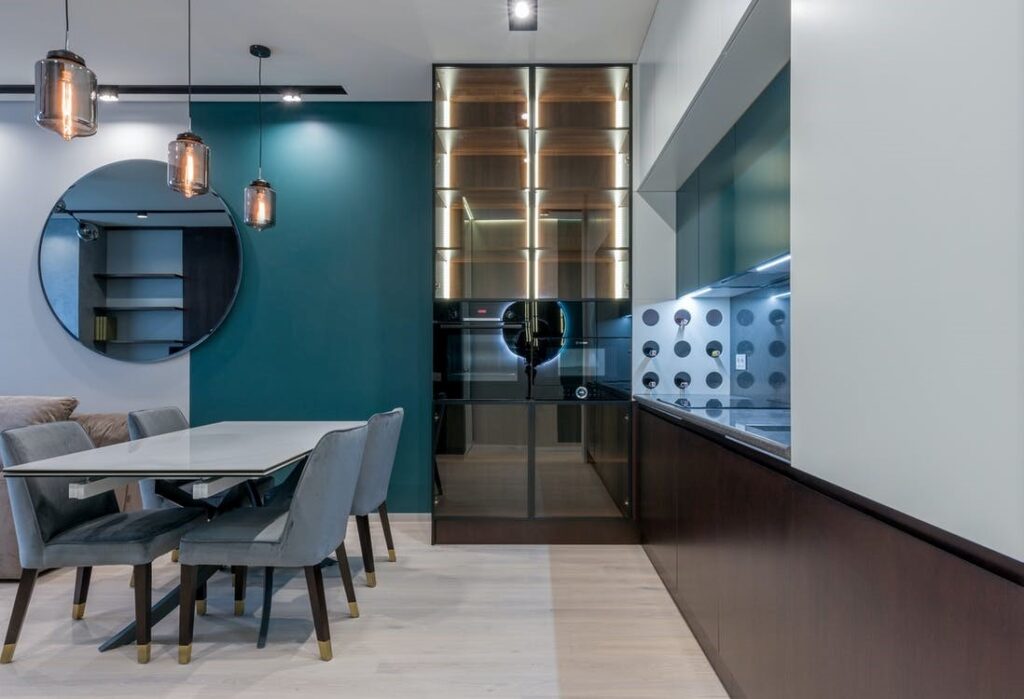
Image – Max Vakhtbovych/ Pexels
By reflecting and bouncing light, mirrors create an illusion of depth that makes the room appear bigger than it actually is. Large hanging mirrors do the perfect job of playing with perception and thus are preferred over small dainty mirrors.
Glass tabletops, mirrored cabinet doors, mirrored chests of drawers, and even mirrors on the floor are clever ways of making the room appear bigger.
- Go BIG with Artwork and Décor
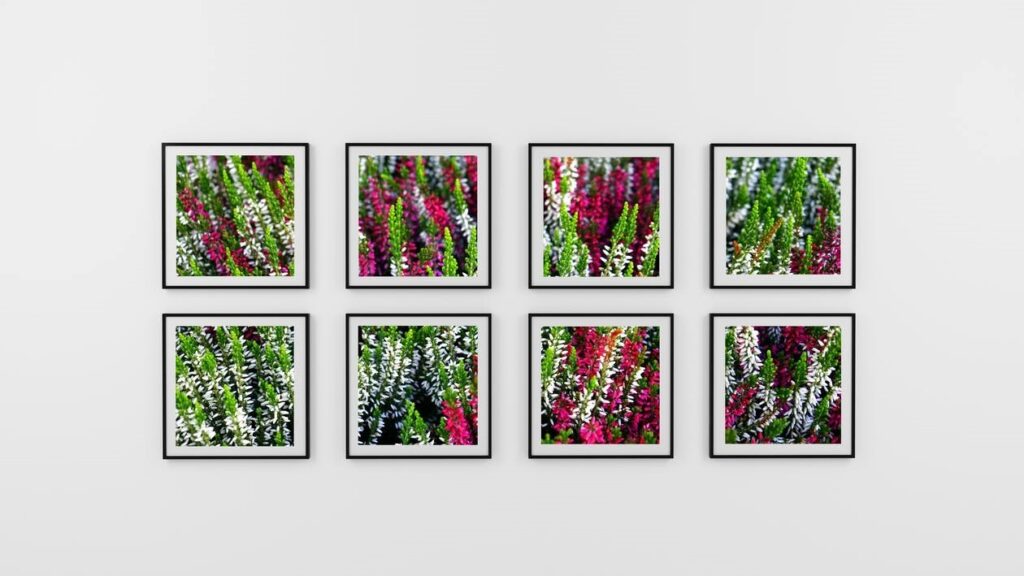
Image – Mike B/Pexels
Too many artifacts would create a cluttered look. Creating a focal point that draws attention makes the room look bigger. A single large piece of art or an accented wall works better than covering all the walls with small paintings or pictures. Limit the usage of décor items, and don’t fill every breathing space as it would make the room smaller.
If you wish to display many small frame pictures, it would be better to display them on a single wall as a focus feature rather than spreading them all over the room.
- Furnishing Matters
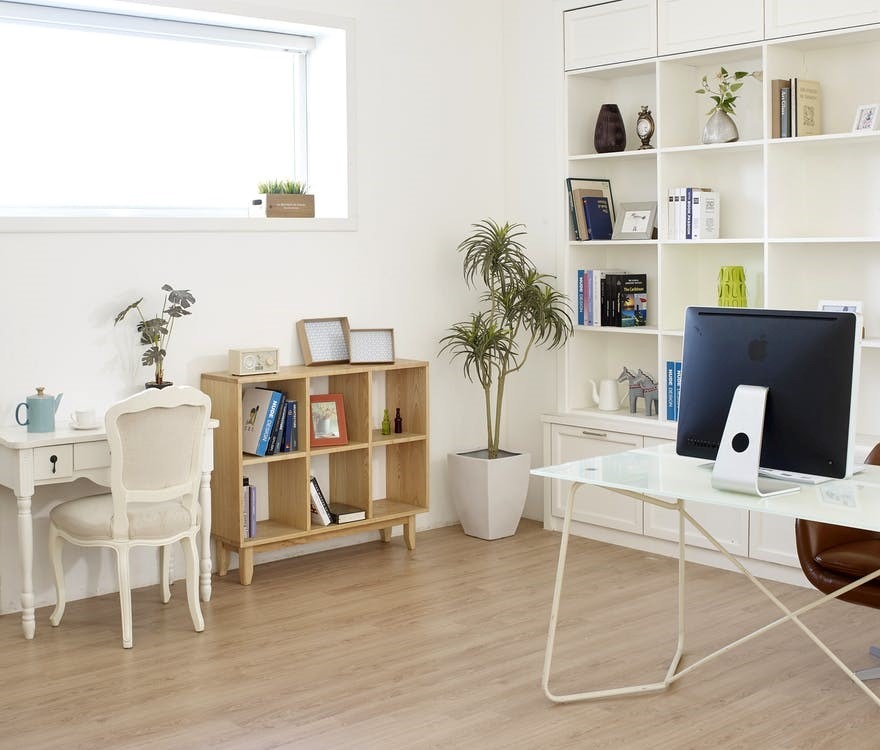
Image – Pixabay
Multi-functional furniture such as sofa-bed, bed with storage, folding tables, etc is excellent for small rooms. Sofas or chairs with exposed legs or open arms allow light, space, and air to filter under them making the room appear airier. Low-height furniture creates vertical space.
Visually heavy pieces and bulky furniture items use up too much space. Clear, see-through furniture makes the room appear more open.
Lighter-toned natural finishes with solid-coloured upholstery make the room appear lighter and bigger. Plain upholstered pieces feel less chaotic by preserving the clean lines.
The placement of furniture also impacts the spaciousness of the room. Instead of placing the furniture too close against the wall, leaving space between the wall and furniture creates roominess.
- Not Just the Four Walls

Image – Pixabay
Apart from the walls, the floor and ceiling too play an important role in how the space appears and feels. Light or pale coloured finishes like white, cream, or lovely pastels like light blue or yellow on the floor and ceiling would make the room feel bigger, brighter, and lighter than it actually is.
Installing a band of small moulding or coving about a foot down from the ceiling that goes around the entire room helps create an illusion of space.
Light-coloured rugs also help create an illusion of extra footage.
Floor-to-ceiling bookcases create a lot of vertical storage and increase the perception of height. It is important to make use of the vertical space to increase storage potential while taking up minimum floor space.
- Drape the Windows
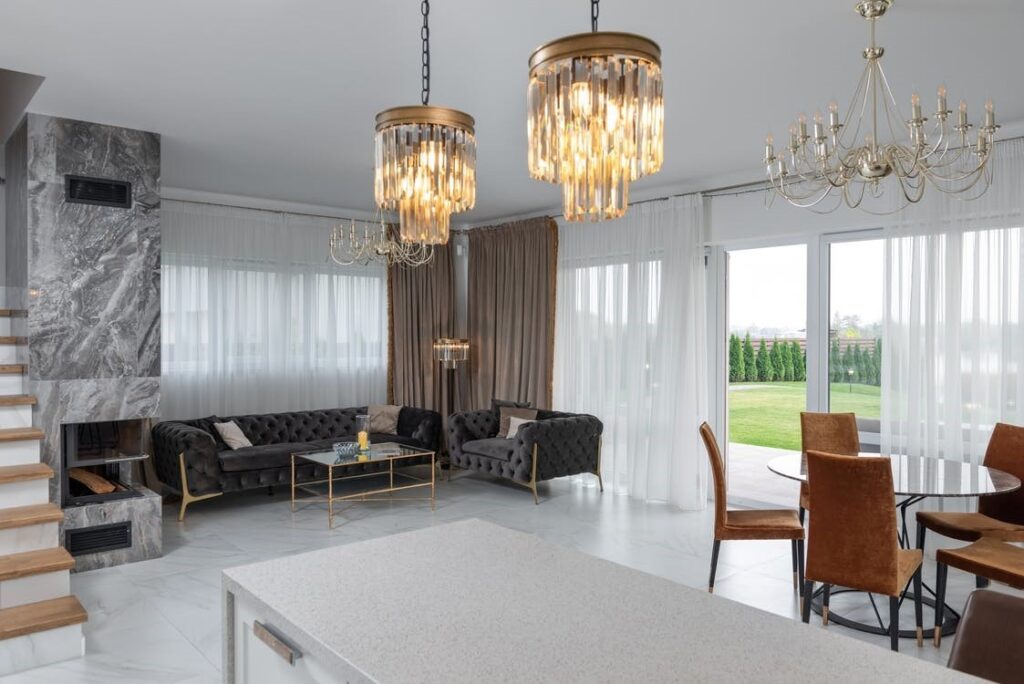
Image – Max Vakhtbovych/ Pexels
Choosing drapes for the room needs care and attention. Drapes enhance the mood and feel of every room. While dark, heavy curtains are perfect for blocking excess light and heat, they make the room dull and restricted. Pale shades, lightweight fabrics, and subtle designs on drapes work well to enhance the space aspect of the room.
Floor-to-ceiling curtains create a feeling of a higher floor to space ratio, making the room appear bigger.
Making small spaces appear bigger is not really that challenging or impossible. With the proper colour technique, usage of reflective surfaces, lighting, décor, appropriate furniture choice, and placement, you can create creative illusions that would make your space appear bigger than it is.
